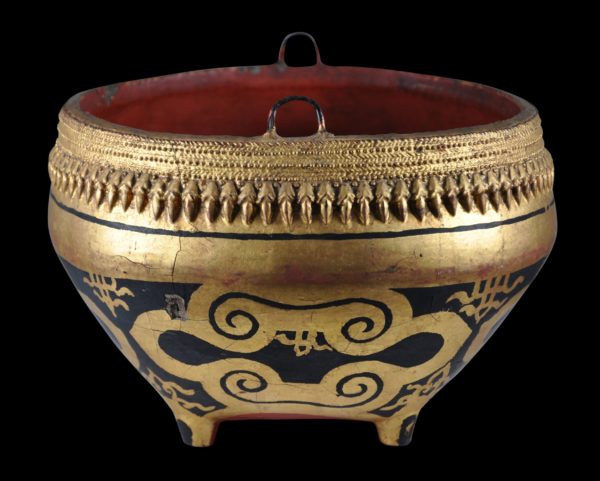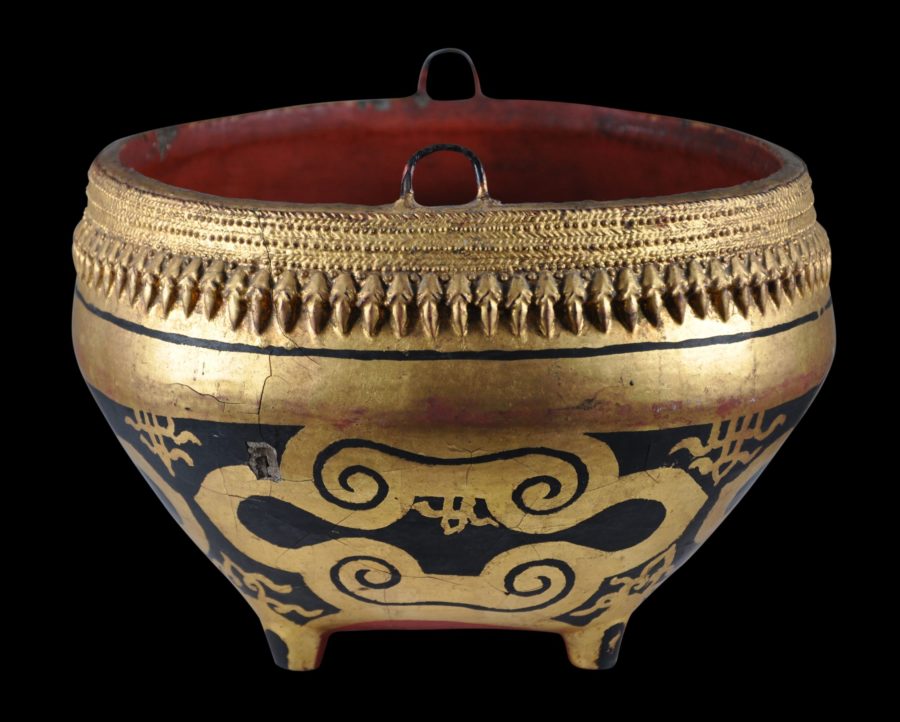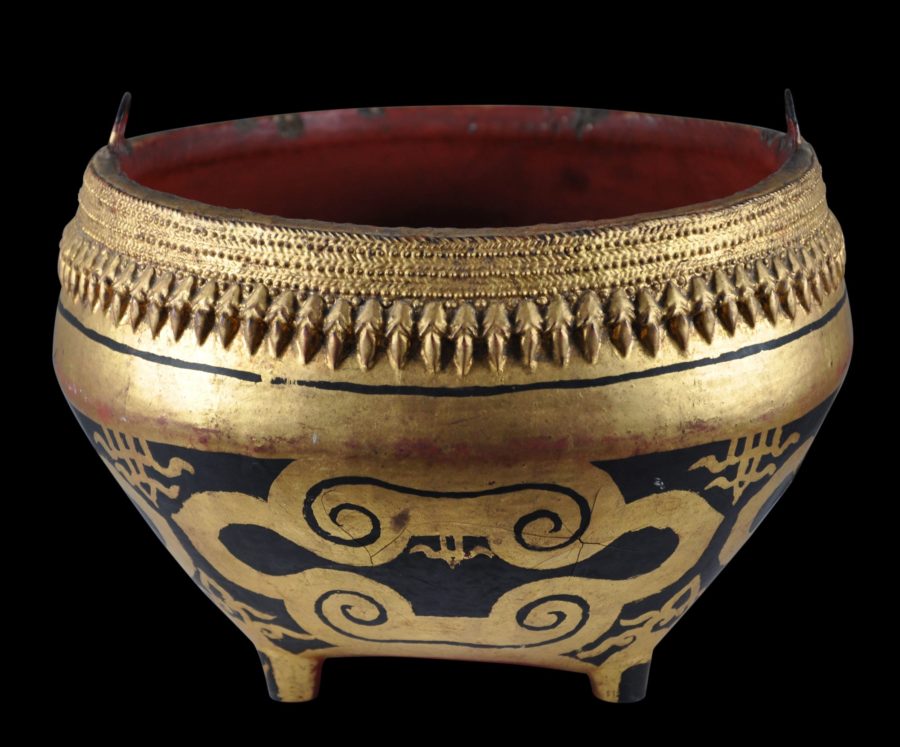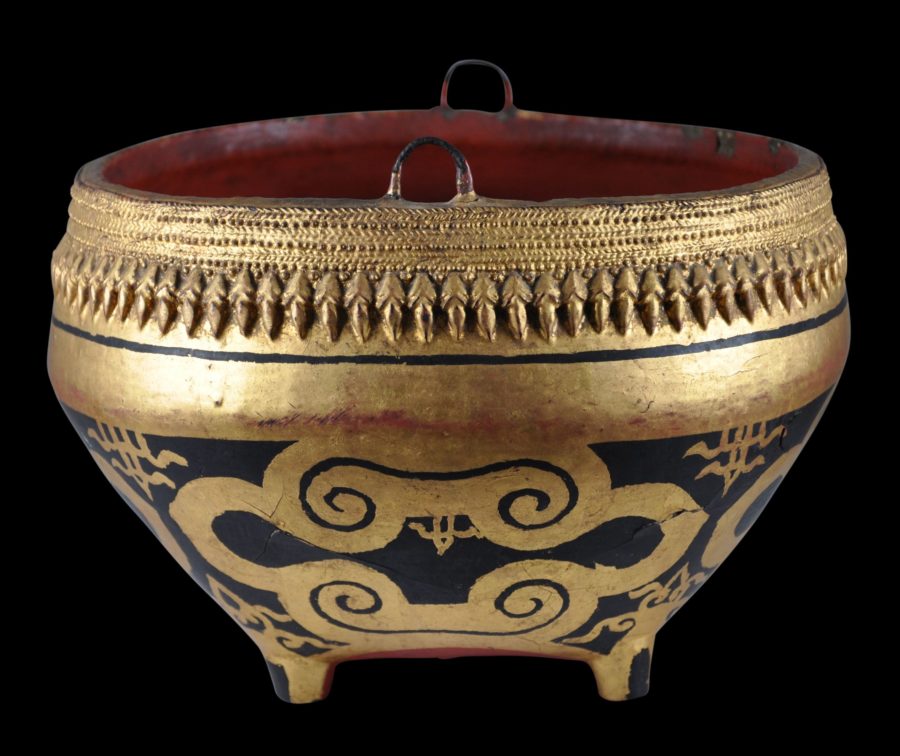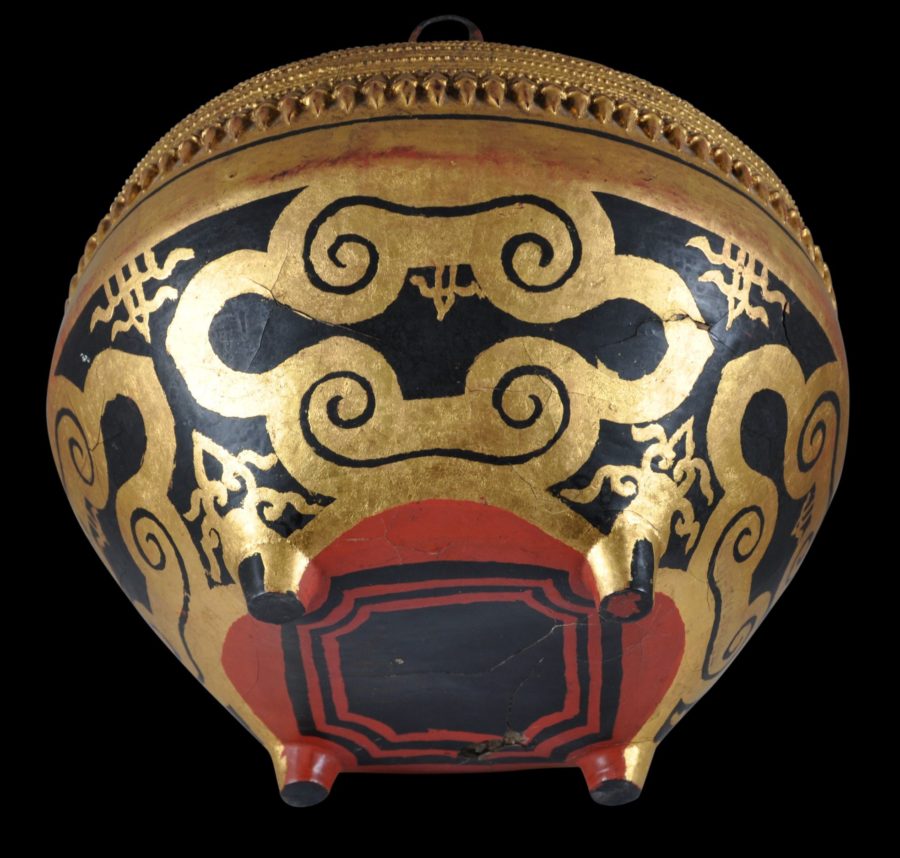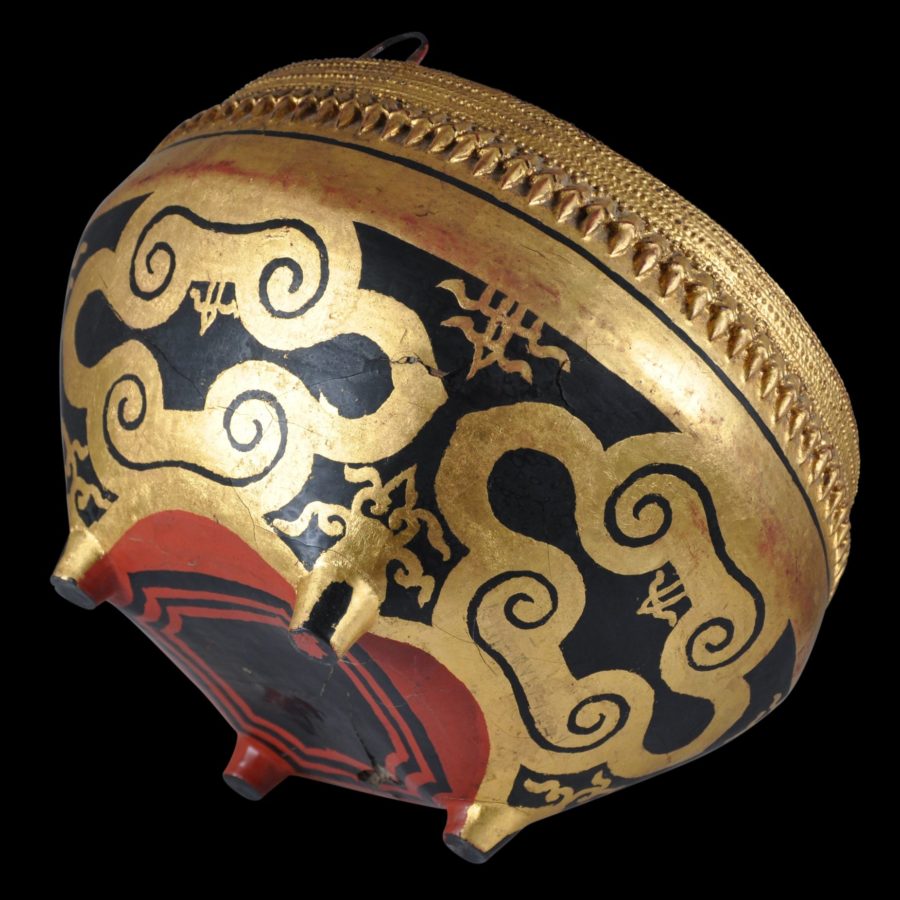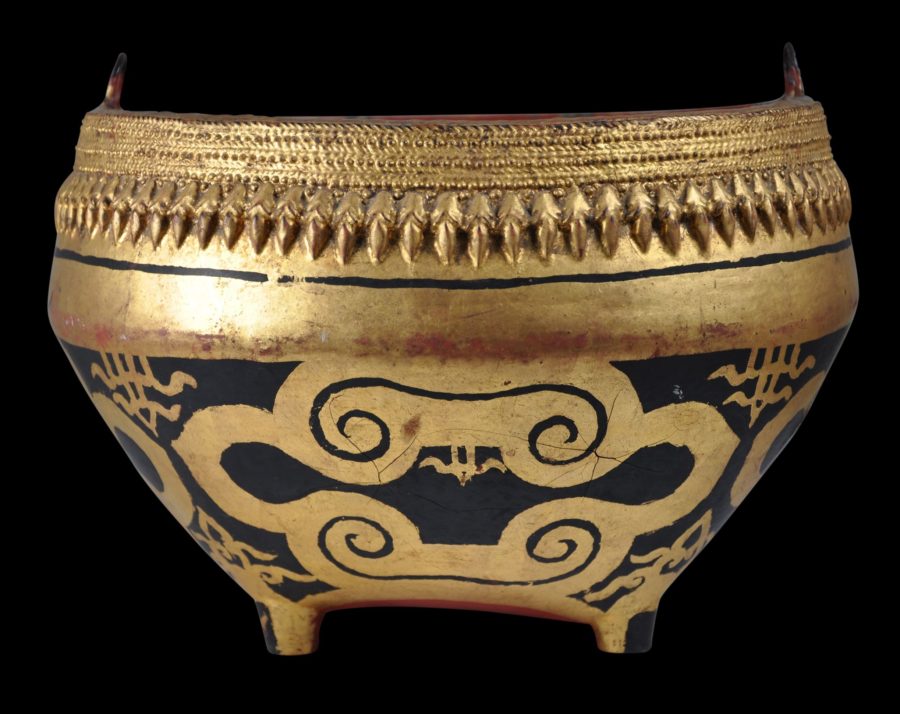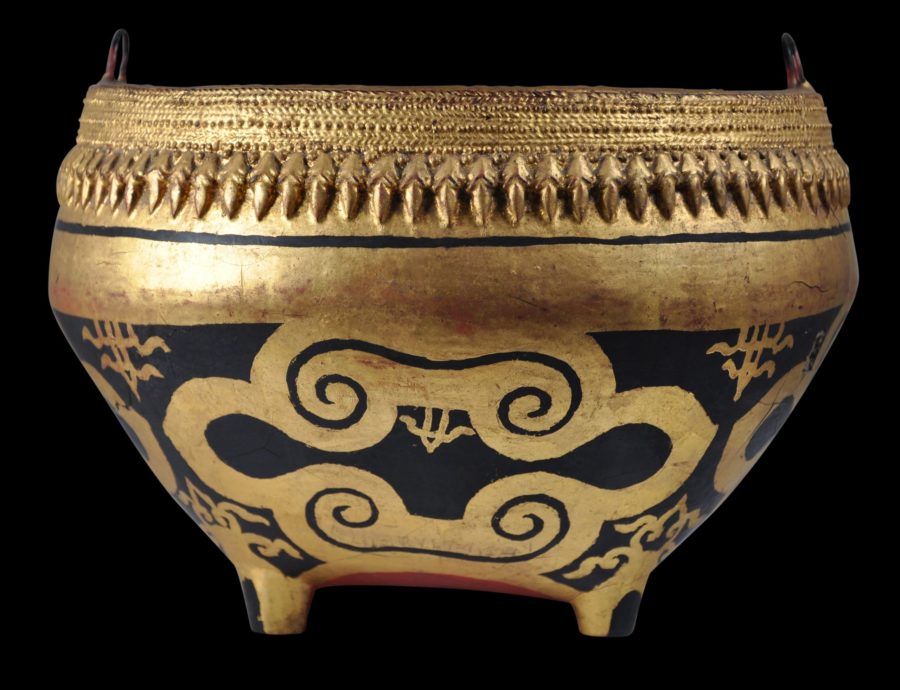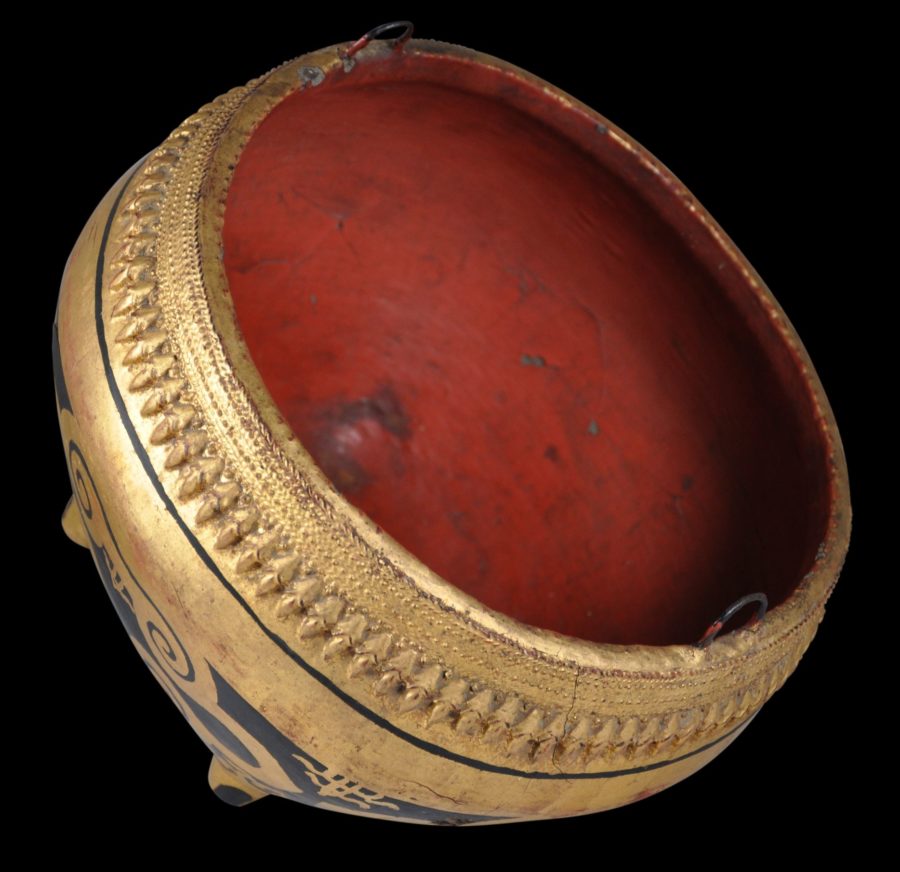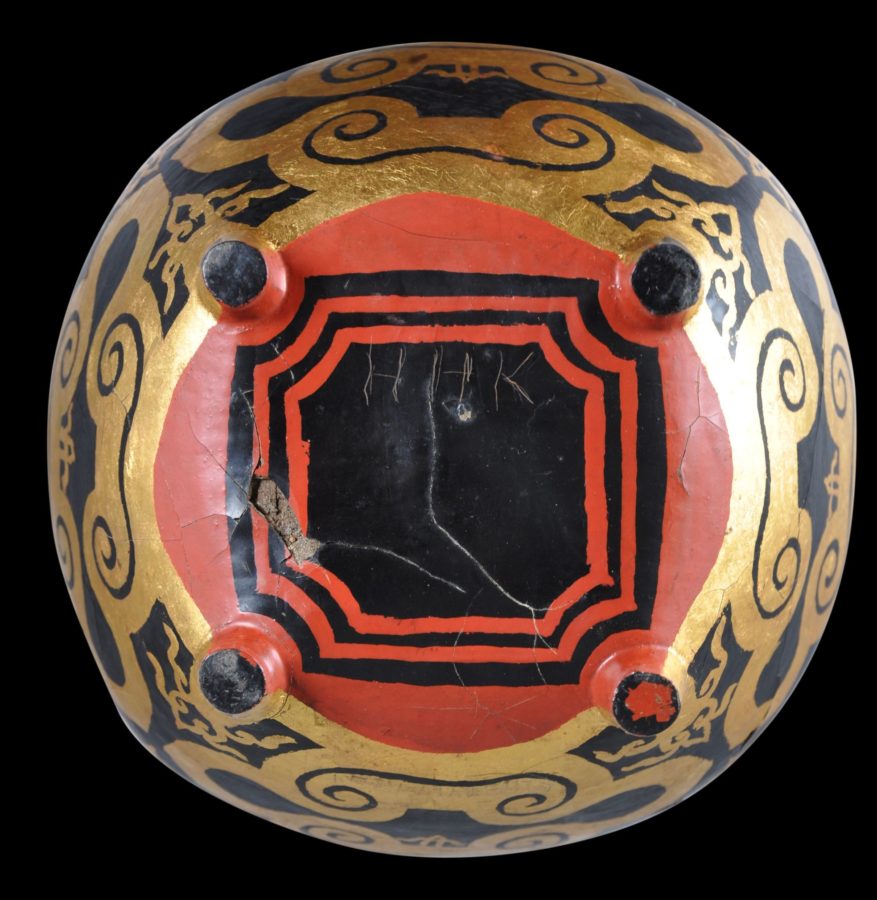This unusual bowl served as a rice basket (ko-kaw-teh) for festive occasions. It appears to be an earlier version of the bowls that would be produced in Kengtung (also known as Jengtung) for the colonial market which were decorated in high relief with figures in indigenous costume.
It stands on four small feet, has a tapering base, and a concave rim marked with two wire loops.
The bowl comprises lacquer and high-carat gold leaf gilding over a woven bamboo. It is decorated with four large, stylised snarling, open tiger mouths. There is a wide, gilded border around the rim that is decorated in relief with elongated bud motifs. This has been completed in thayo work – a process whereby thin, rolled strands of lacquer and ash putty are applied in patterns. It has a red interior.
The base is decorated with a black and red square design with multiple borders.
Kengtung became known for producing lacquerware rice baskets that originally started out plain (such as the example here) but became elaborately embellished with medallions, bands of scrolling foliage and human figures in indigenous costume by the first part of the twentieth century, most probably to catch the interest of the colonial market. Originally such baskets were used to hold rice at religious festivals, and also were used as presentation pieces. Bowls made using this technique are illustrated in Fraser-Lu (222, p. 165-6), Isaacs & Blurton (2000), Conway (2006, p. 135), and Singer (1991).
Kengtung was the largest and eastern-most of the Shan states and was ruled by a prince from the Tai Khoen ethnic group. It has had a small lacquerware industry since the eighteenth century.
Surviving Kengtung bowls of this type are relatively rare and those that are in good condition are rarer still. This example is in relatively fine condition: there is some old, stable, shrinkage-related cracking to the lacquer and some losses to the gilding to the extremities, plus some restoration to one leg. But importantly there are no losses of any significance to the figures in indigenous dress about the bowl and no significant loss to the gilded lacquerwork.
Several examples with this type of low relief, black and gold decoration are known in museums, and one has been published in Singer (1991). Other than that, they are barely known. There are two areas of loss to the lacquer on this example – one on the side and one on the base, and some light surface cracking. But overall, the condition is fine, particularly given its relative rarity.
References
Fraser-Lu, S., Burmese Crafts: Past and Present, Oxford University Press, 1994.
Fraser-Lu, S., Burmese Lacquerware, White Orchid Books, 2000.
Isaacs, R., & T.R. Blurton, Burma and the Art of Lacquer, River Books, 2000.
Singer, N., ‘Jengtung Lacquerware’ in Arts of Asia, September-October 1991.
Weigelt, U., Birmas Lackkunst: in Deutschen Museen, Museum fur Lackkunst, 2005.


